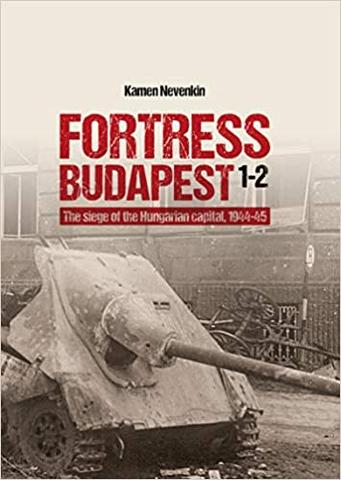Fortress Budapest

The 1944-1945 battle for the Hungarian capital of Budapest often gets overlooked by not only other great city sieges of the Second World War (like Leningrad), but also because of its timing (running contempanerously to other great campaigns in Europe like the Battle of the Bulge in Western Europe). However, from the perspective of those interested in examining why it was certain battlfield outcomes were achieved during the war or those interested in history's great military sieges then this battle is the book for you. Furthermore, it is quite instructive on a number of levels. These include via offering a detailed study of how it was the Red Army cracked very substantial Axis defensive positions in intense in-close urban combat as well as how it was the Red Army was able to defeat a major multi-layer defensive system protecting Pest. In this massive, but engaging and well-researched two-volume study historian Kamen Nevenkin captures all of it.
Moreover, Nevenkin does a great job of bringing color to what is really an operational militiary study in an engaging style that works in first-hand accounts from those that fought in the battle as well as from those caught up by this great multi-month struggle. With all due respect this is not a David Glantz book. For those that might not know David Glantz is the foremost historian in the English-speaking world in regards to the Nazi-Soviet war. He is a historian whose work I much enjoy but who is sometimes unfairly known for his massive and sometimes a bit too dry and dense tomes. This book manages to achieve Glantz level detail while offering an Antony Beevor level of popular relatability for the more casual Second World War enthusiast. On top of that and though this great siege has been covered by others in the past this is for the most part what will be known as the comprehensive account of the fighting. Nevenkin draws heavily not only from first person accounts but also via his extensive look at the archival sources of the opposing sides. Please note that this book does not go into any detail in regards to the various German relief operations outside the city that were launched primarily in January of 1945. For those interested in such fighting I have in the past endorsed the engaging work of Aleksei Isaev and Maksim Kolomiets. And that's ok. Nevenkin does not set out to delve into those topics, focusing instead on the assault against the city itself.
The goal of Fortress Budapest is to provide a very detailed operational history of the fight for Budapest. Nevenkin accomplishes that goal via focusing in on the 50-day siege of the city, at times breaking down the fighting not only by the day but the hour. The book's chapters also spend quite a bit of time discussing the Soviet approach to the city, the attempt to take the city off the march, and amply illustrates why that attempt failed. Only after setting the stage in such a manner does the author then tackle the combat that took place in Pest, Buda, on the Danube and its islands, as well as in the air above the city before turning to the ultimate German attempt to escape the trap into which they had fallen. This includes chapters providing an in-depth look at the air war over the city - a much welcomed inclusion as far too many works ignore such an important aspect of the fighting. If that is all the author had done it would be quite an accomplishment, but Mr. Nevenkin was not content to stop there.
This is a two-volume set of books. And it's not just the size of these volumes that justify their price - it's what's included that matters. To be sure Volume 1 does the lion's share of the work in explaining how the siege unfolded. However, Volume 2 is a real treat in and of itself. This companian volume (which is meant to be referenced alongside Volume 1) is packed full of color maps and detailed illustrations allowing the reader to see for themselves exactly how the city's various sectors were fortified including complete and detailed sketches of the German defesive works, system of fire, and progress of the fighting in the various city districts, along with diagrams showing Soviet assault team tactics. In addition, Volume 2 includes a number of previously unpublished photographs of the troops, and equipment that took part in the battle as well as the city itself and how it looked at that time. If you have any kind of interest in this battle then you should not let the price deter you. For that matter the printing costs alone must have been considerable and regardless the scope of this multi-volume work more than justifies it's cost. I highly recommend this two-volume set to my readers.



Post new comment